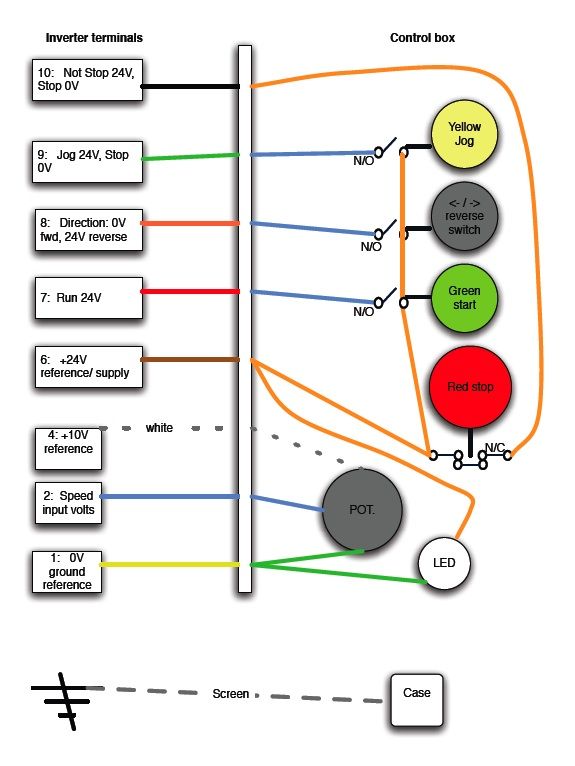I have experience of Inverters/VFDs in a home workshop, but not the static and rotary converters.
The VFD (my two are Parker SSD models) is great: quiet, flexible, small and neat, and I think very safe. It provides soft start, no-volt stop and flexible speed control.
However:
– with a 240V supply, you will only get 240V 3-phase and (as John says) will need a VFD sized to output 11 amps. (The good news is that the soft start controls inrush current, and you don’t need to cater for a momentary 60 or 80 amps at start)
– you will need to buy or make a control box which replaces the existing push buttons on the mill, and is permanently wired into the inverter. I made mine from components I got from RS, and the total cost was £50-60 for On, Stop, Jog and Reverse pushes and switches, contact blocks, potentiometer, enclosure etc : in addition to the cost of the inverter itself
– the inverter must have an EMC filter (radio intereference) fitted and must be wired carefully using screened cables, because it works by creating phase differences and a side-effect is electrical ‘noise’
– for the same reason, you will need to plug it into a circuit which is protected by circuit breaker (MCB) but not a residual current device (RCD), because the inverter creates earth leakage (or it may just be a sort of phantom earth leakage because that’s what the phase difference ‘looks like’ to the equipment, I’m not sure). Whatever it is, it will trip an ordinary domestic RCD. I am not an electrician, but I suspect the latest wiring regulations require any NEW sockets to be RCD protected, so whether this creates a problem depends on your wiring and circumstances.
– the latest MEW contains an article about converting a 3HP Harrison lathe to inverter drive, and suggests that there is a correct way to install the power supply under the latest regulations: I think the author understands the details better than I do.
John Coates.






